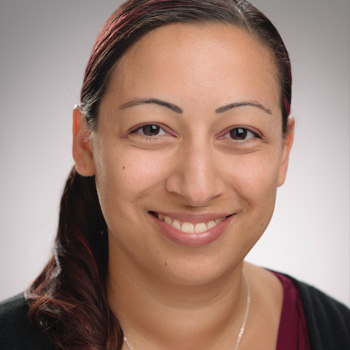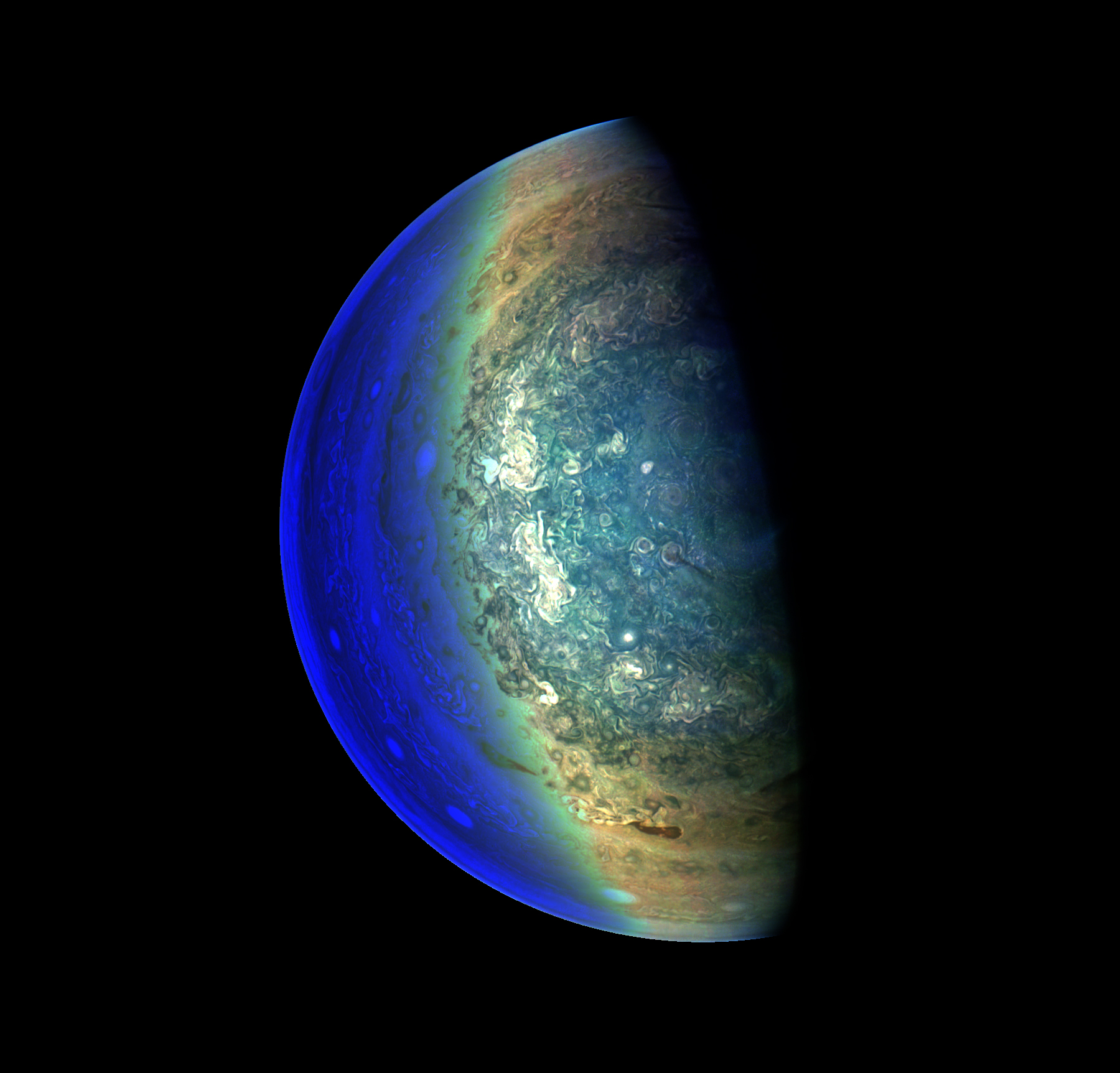
Dr. Knicole Colón – Operations Project Scientist, NASA
Operations Project Scientist, NASA
Dr. Knicole Colón is an Astrophysicist at NASA’s Goddard Space Flight Center in Greenbelt, MD. She is the James Webb Space Telescope Operations Project Scientist. Colón also serves as the Project Scientist for the Pandora SmallSat mission. She previously served as the Deputy Operations Project Scientist for the Hubble Space Telescope and the Project Scientist for the Transiting Exoplanet Survey Satellite (TESS).
Colón grew up in Mount Holly, New Jersey and has been a fan of science fiction for as long as she can remember. This led her to pursue a career in science. She received her B.S. in Physics (with a minor in Mathematics) from The College of New Jersey in 2007, where she held a National Hispanic Merit Scholarship. She then obtained her M.S. in 2009 and Ph.D. in 2012 in Astronomy from the University of Florida. During graduate school, she was awarded a National Science Foundation Graduate Research Fellowship. Following graduate school, Colón spent a few years working as a postdoctoral research scientist at the University of Hawai’i in Manoa and then at Lehigh University. She then went to NASA’s Ames Research Center in California, where she worked as a support scientist for the Kepler and K2 missions. Colón joined Goddard in 2017.
Her research involves the discovery and characterization of extrasolar planets (or exoplanets), which are planets that orbit distant stars. She uses a variety of optical and infrared telescopes to study exoplanets, including the Hubble Space Telescope and TESS. Her research focuses on studying “extreme” exoplanets that are unlike any planets in our solar system, to learn about the composition of their atmospheres and gain insight into how they formed and evolved.
Colón loves professional football and tries to never miss a game played by her favorite team (Go Birds!). She also enjoys collecting handbags, to make her life more colorful. She has also remained a fan of science fiction and fantasy over the years, and she even met her favorite author once and spent an hour chatting with her about all kinds of topics over a cup of tea.
Meet Dr. Colón

Dr. Knicole Colón was 12 years old when she decided she wanted to be an astronomer. She was influenced by a love of both science and science-fiction movies, as well as the enthusiasms of her dad, who bought her a telescope branded with the “From Earth to the Moon” miniseries she’d watched. “All these things happened at once and I just got hooked,” she said. “My dad has always been interested in learning about anything and everything, and around that time he was really interested in meteor showers and would make us all get up in the middle of the night to watch them.”
The movie “Contact” was another motivator, she said. “I think it was the idea of literally making contact: what would happen, what were those aliens really like? And it was so open-ended that there wasn’t really an answer, and I think that’s what got to me — it wasn’t a generic alien at the end of the movie that tried to kill us. It was totally different than anything else I’d seen.”
But Knicole didn’t just have a dream. The Mount Holly, New Jersey, preteen had a plan. “I just started taking every math and science class I could get.” That led to college courses in physics and astronomy, as she earned her bachelor’s degree in physics from The College of New Jersey. She then earned her master’s degree and doctorate in astronomy from the University of Florida, where she won a scholarship from the National Science Foundation.
During her studies, she won a National Geographic Society Young Explorers Grant and a Lewis and Clark Fund for Exploration and Field Research in Astrobiology from the American Philosophical Society. She used the money from the awards to travel to one of the telescopes she needed to use for her graduate degree research.
Knicole went on to work at the University of Hawaii in Honolulu and Lehigh University in Bethlehem, Pennsylvania, before moving to NASA’s Ames Research Center in California and then to Goddard Space Flight Center in Maryland.
Knicole’s expertise is in searching for and gathering information on planets outside the solar system. At Lehigh University, she joined the Kilodegree Extremely Little Telescope (KELT) transit survey, which uses small, ground-based telescopes to search for giant planets around bright stars. She still works on the project as a member of the group that reviews and votes on candidate planets to decide which ones are worth further observation, helps decide which parts of the sky to observe next, and more.
At Ames and initially at Goddard, Knicole worked on the planet-finding Kepler mission and its later, extended K2 phase, eventually joining the Hubble Space Telescope team as well as the Transiting Exoplanet Survey Satellite team. Knicole uses a variety of ground-based and space-based optical and near-infrared telescopes for her research, which enable her to collect information on the size of the planets and the makeup of their atmospheres. Her main interest is researching the many different types of planetary systems and comparing them to the planets in our solar system.
The variety of missions you can experience working at NASA is part of its excitement, Knicole said. For instance, her previous research was focused on planetary atmospheres, but right now, one of the projects she works on looks at the ways that flares from stars can affect the planets around them.
“There are so many experts at NASA in different areas that someone can come up to your door every week and say, ‘I have this great idea, what do you think of this, should we propose a new mission, should we do this or that,’” she said. “Every day is different.”
Students interested in becoming astronomers should take lots of math and science classes, Knicole advised. Those will show you whether this type of work really does appeal to you. Seek out local astronomy clubs, and learn from their members. “They can point to anything in the sky, and it just gives you an appreciation for their knowledge. They can definitely teach you a lot.” If NASA has a center nearby, look into internships and other ways of connecting, like public events. Knicole emphasized that NASA is very receptive to interested students.
Knicole got to experience the joy of astronomical discovery in her own student years. “In grad school, when I was first getting into research, I had collected my first data from this new telescope that nobody had used before to look at exoplanets,” she recalled. “I saw the signal from the exoplanet, and I was so happy. I was so in awe that I was able to pull this whole project together. I just knew I was in the right place.”
That feeling stays with you through all your research projects, she said. “To see all this work go into these missions and then see the outcome be fruitful — those are my favorite moments.”
In addition to her love for astronomy, Knicole is a dedicated Philadelphia Eagles fan and tries to never miss watching a game. She also enjoys playing computer games, watching TV, and reading fantasy and science fiction novels.
Q&A with Dr. Colón

Education
The College of New Jersey: Physics
University of Florida: Astronomy
What first sparked your interest in space and science?
My first memories of astronomy go back to when I was a kid, and my dad used to share his own excitement for meteor showers with the family. I remember getting woken up late at night (or staying up late in the first place!) and going outside to watch meteor showers. I also was inspired by science fiction movies when I was younger, particularly “Independence Day” and “Contact.” I became so intrigued by the idea of finding and communicating with alien life that my dad bought me science books about the search for extraterrestrial intelligence. I knew then, around the age of 12, that I wanted to be an astronomer when I grew up.
How did you end up working in the space program?
I came into my job at NASA via networking. I was at a NASA event for the Kepler mission and ended up talking to someone who worked at NASA Headquarters. I told him that I was really enjoying the event, and he told me there was an opportunity to work on the Kepler mission. That immediately caught my interest, and I ended up applying and getting the job. That job took me to NASA's Ames Research Center in California. After a couple years there working on the Kepler mission, I moved over to NASA's Goddard Space Flight Center to work on other missions, including the Hubble Space Telescope and TESS, the Transiting Exoplanet Survey Satellite.
Tell us about your job. What do you do?
There are two major branches of my job – research and mission work. My research involves the discovery and characterization of transiting extrasolar planets or exoplanets. These are planets that orbit around other stars. Transiting planetary systems are aligned in such a way that we can see the exoplanets pass in front of their star from our point of view. That means we can measure the radius of the exoplanet. I specifically measure the radius of exoplanets at multiple wavelengths of light, which allows me to study detailed properties like the composition and dynamics of exoplanet atmospheres. For mission work, I work on projects that include the Hubble Space Telescope and TESS. This mission work involves a variety of tasks, from public outreach for the missions, attending conferences and other events to promote the missions' capabilities, helping other astronomers use data from the missions, developing documentation to describe the missions, establishing budgets for the missions, and more!
What's one piece of advice you would give to others interested in a similar career?
If you have a passion for anything, whether it's astronomy or some other subject, never give up that passion. Do not be shy about reaching out to people who share your passion (like working at NASA), because you never know what connections you will make and where they will lead.
What are some fun facts about yourself?
I love that my job takes me to some amazing places around the world. I was lucky to attend a summer research program as an undergraduate at Arecibo Observatory in Puerto Rico, an observatory that was featured in the movie “Contact” (one of the things that was a major inspiration to me to pursue astronomy in the first place!). Not only did I get to spend the summer working on data from Arecibo, but I also stayed in the very same "cabin" that was actually shown in the movie! Just a few months after that, I was able to visit another observatory featured in Contact – the Very Large Array in New Mexico. Later on, after I started working at NASA, I was humbled to meet Jill Tarter from the SETI Institute in person, who was the inspiration for the main character in “Contact.” I am so humbled by these opportunities that allowed me to literally live out my dream that first began after I saw the movie for the first time at the age of 12.
What is your favorite space image and why?
I study exoplanets that are so far away it's difficult to imagine what they truly look like, so I find it absolutely fascinating to see just how beautiful and complex our own solar system planets are and what that means for what exoplanets might look like.

